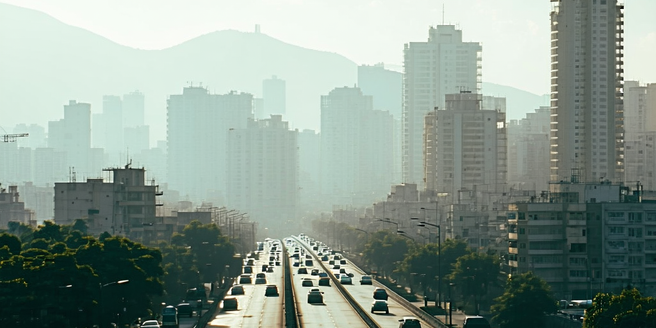
Understanding Urban Heat Islands
Urban heat islands (UHIs) refer to the phenomenon where urban areas experience higher temperatures than their rural surroundings due to human activities and infrastructure. This effect results from the extensive use of concrete and asphalt, buildings that absorb and retain heat, and reduced vegetation. Cities with fewer green spaces and more heat-absorbing surfaces tend to trap warmth, leading to noticeable temperature differences between urban and rural areas. UHIs can exacerbate heatwaves, increase energy consumption due to higher demands for cooling, and negatively impact human health and the environment. Understanding this phenomenon is crucial for policy makers, urban planners, and environmentalists to devise effective strategies that can mitigate its adverse effects through planning and adaptation to climate change.
Factors Influencing Temperature Changes
Temperature variations in urban areas are affected by several factors. Among them, the density of buildings, type of materials used, and ratio of built-up areas to vegetation play significant roles. Surfaces that absorb solar radiation heat during the day tend to retain and release it at night, affecting local temperatures. Additionally, industrial activities and vehicular emissions contribute to increased heat production. Geographic layout and meteorological conditions such as wind and humidity can either exacerbate or mitigate these changes. Recognizing these factors allows for more informed urban planning to minimize temperature fluctuations, reduce energy consumption, and improve quality of life in cities. Addressing these issues through strategic planning can help in moderating urban climates and enhancing resilience to climate variations.
Impact of Building Materials on Heat Retention
The choice and use of building materials in urban areas significantly impact heat retention and temperature regulation. Materials such as concrete and asphalt have high thermal mass, meaning they absorb considerable amounts of heat during the day and slowly release it at night, contributing to warmer night-time temperatures in cities. Innovative materials with reflective properties or lighter colors can reduce heat absorption, decreasing ambient temperatures. Green roofs and reflective pavements are examples of strategies that can combat heat retention. Awareness and adoption of such materials in construction and urban development are crucial for mitigating the adverse effects of urban heat islands, thus sustaining a more balanced and less aggressive urban climate.
Role of Vegetation in Regulating Temperatures
Vegetation plays a crucial role in regulating temperatures within urban environments. Plants and trees provide shade, reducing surface temperatures by limiting direct sunlight exposure. The process of evapotranspiration, where moisture is released from leaves into the air, cools the surrounding atmosphere. Areas with dense vegetation, such as parks and gardens, act as natural cooling islands amidst heat-absorbing urban landscapes. Increased green coverage helps lower urban temperatures, counteracting the urban heat island effect. Encouraging the development of green infrastructures, such as vertical gardens and rooftop greenery, can further enhance climate resilience. Urban planners and city administrations prioritize integrating vegetation into cityscapes to create more livable and environmentally sustainable cities.
The Effect of Human Activities on Temperature
Human activities significantly influence temperature variations, particularly in urban areas. The proliferation of buildings, vehicles, and industries generates large amounts of heat, contributing to the urban heat island effect. Air conditioning units, while cooling indoor environments, release warm air into the atmosphere, exacerbating outdoor temperatures. Industrial processes and traffic emissions are additional heat sources, elevating urban temperature levels. Recognizing the impact of these activities is essential for implementing effective strategies to mitigate their effects. Encouraging energy-efficient practices, promoting public transportation, and implementing green building design are measures that can help reduce human-induced temperature fluctuations and promote a healthier urban environment.
Strategies to Mitigate Temperature Fluctuations
Mitigating temperature fluctuations in urban areas involves strategic planning and implementation of sustainable practices. Integrating more green spaces and using reflective building materials can significantly reduce heat absorption and retention. Urban planning that incorporates shading and ventilation can promote cooler city environments. Implementing policies for reducing vehicular emissions, increasing public transportation usage, and promoting energy-efficient technologies are crucial measures. Encouraging community adoption of green roofs and walls can aid in temperature regulation. Educating citizens about energy conservation and sustainable practices can further enhance efforts to stabilize urban temperatures. These strategies contribute to reducing the intensity of urban heat islands and improving resilience to climate changes.
